Laminate flooring has become a popular choice for homeowners due to its versatility, affordability, and durability. One of the most important factors to consider when choosing laminate flooring is its thickness. The thickness of laminate flooring can impact its durability, installation, and overall aesthetic appeal.

When it comes to laminate flooring, thickness is measured in millimeters. The thickness of laminate flooring typically ranges from 6mm to 12mm. Thicker laminate flooring is generally more durable and can better withstand wear and tear, making it a good choice for high-traffic areas. However, thicker laminate flooring can also be more expensive and more difficult to install.
Key Takeaways:
- Laminate flooring thickness is an important factor to consider when choosing the right flooring for your space.
- Thicker laminate flooring is generally more durable and can better withstand wear and tear, but can also be more expensive and difficult to install.
- The subfloor requirements and preparation, compatibility with underfloor heating systems, and aesthetic implications of thickness should also be taken into consideration when selecting laminate flooring.
Fundamentals of Laminate Flooring Thickness
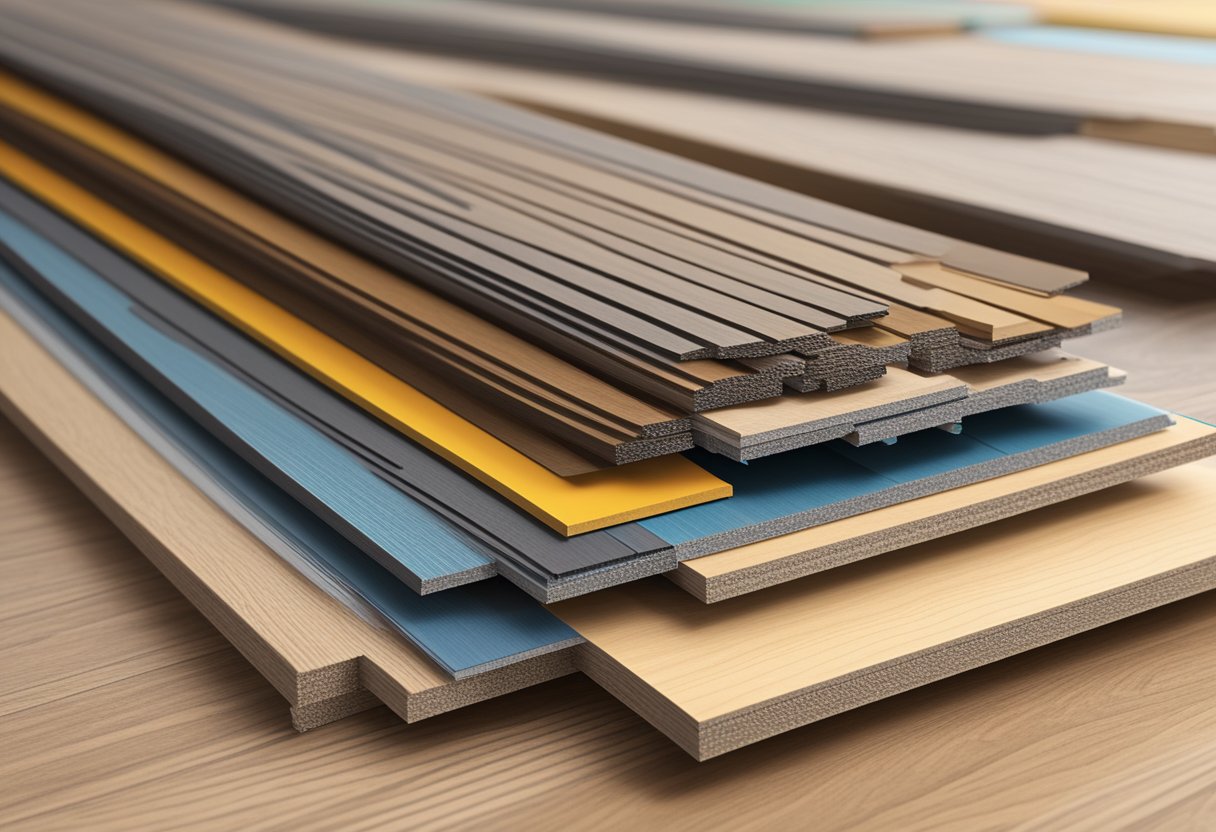
Laminate flooring thickness is an important factor to consider when choosing the right flooring option. It is measured in millimeters (mm) and refers to the thickness of the entire plank, including the wear layer.
Thicker laminate flooring tends to be more durable and resistant to wear and tear. It can also provide better sound insulation and a more solid feel underfoot. However, thicker laminate flooring can be more expensive and may require a more substantial subfloor to support its weight.
Most laminate flooring planks come in four thicknesses: 7mm, 8mm, 10mm, and 12mm. The 7mm thickness is the thinnest option and is suitable for areas with low foot traffic, such as bedrooms. The 8mm thickness is a popular choice for most residential areas, including living rooms and dining rooms. The 10mm thickness is a good option for high-traffic areas, such as hallways and entryways. The 12mm thickness is the thickest option and is ideal for commercial settings or areas with heavy foot traffic.
It is important to note that the thickness of the laminate flooring does not necessarily affect its quality. Instead, the quality of the laminate flooring is determined by its AC rating, which assesses the durability of the flooring. The AC rating ranges from AC1 to AC5, with AC1 being the least durable and AC5 being the most durable.
Overall, when choosing the thickness of laminate flooring, it is important to consider the intended use of the space, the level of foot traffic, and the budget.
Benefits of Thicker Laminate Flooring
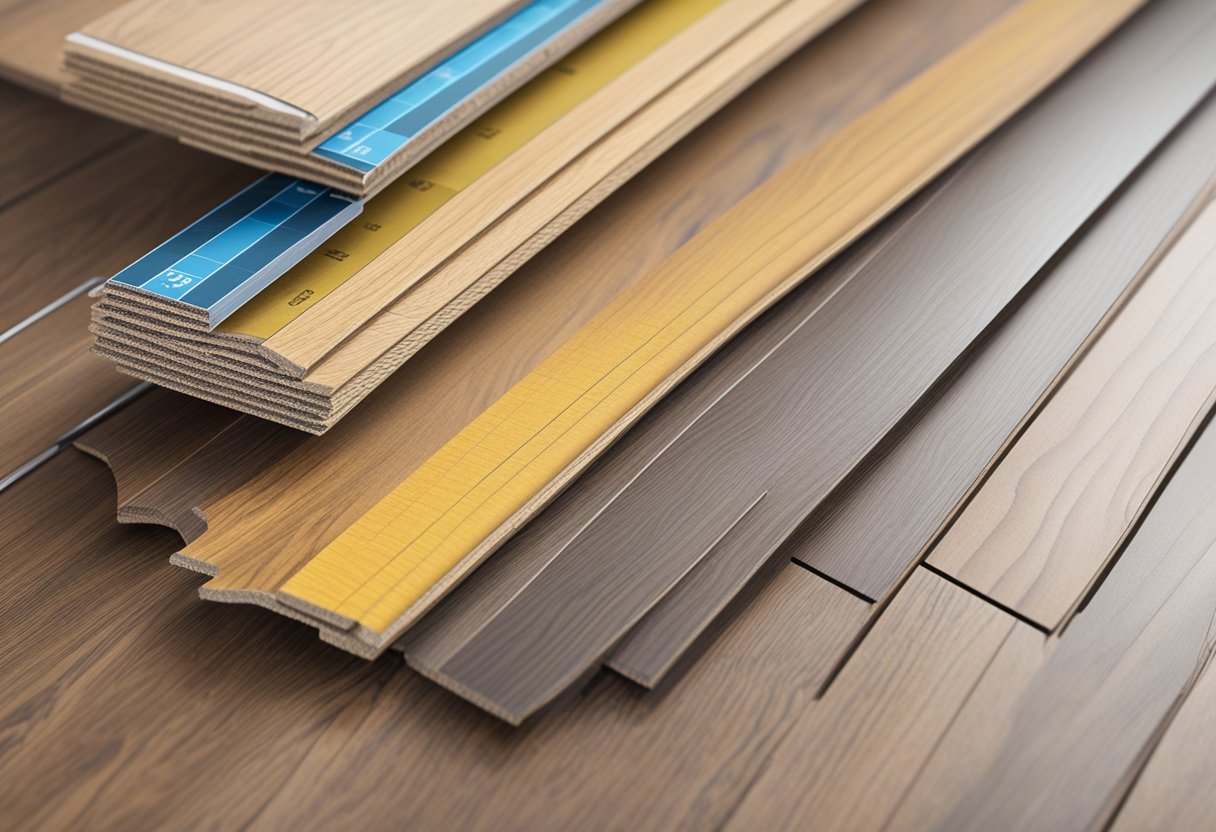
When it comes to laminate flooring, thickness is an important consideration. Thicker laminate flooring offers a number of benefits over thinner options, including increased durability, sound insulation, and comfort underfoot.
Durability and Stability
Thicker laminate flooring is generally more durable and stable than thinner options. This is because thicker planks are less likely to warp or buckle over time, which can be a common issue with thinner laminate flooring. Thicker laminate is also less likely to show signs of wear and tear, making it a good choice for high-traffic areas.
Sound Insulation
Thicker laminate flooring provides better sound insulation than thinner options. This is because the extra thickness helps to absorb sound and reduce noise levels. This can be particularly beneficial in apartments or other shared living spaces where noise can be a concern.
Comfort Underfoot
Thicker laminate flooring is also more comfortable underfoot than thinner options. This is because the extra thickness provides a more cushioned feel, which can be easier on the feet and joints. This can be particularly beneficial in areas where people will be standing for long periods of time, such as kitchens or workspaces.
In summary, thicker laminate flooring offers a number of benefits over thinner options, including increased durability, sound insulation, and comfort underfoot. When considering laminate flooring options, it is important to take thickness into account to ensure that the flooring meets your needs and provides the desired benefits.
Choosing the Right Thickness for Your Space

When choosing the thickness of laminate flooring, it is important to consider the space it will be installed in. Here are some factors to keep in mind:
Residential vs. Commercial Use
The first factor to consider is whether the laminate flooring will be installed in a residential or commercial space. For residential use, a laminate flooring thickness of 7-10mm is typically sufficient. However, for commercial use, a thicker laminate flooring of 10-12mm is recommended to withstand the heavier foot traffic.
Traffic and Wear Considerations
Another important factor to consider is the amount of foot traffic the space will receive. For high-traffic areas, a thicker laminate flooring is recommended to withstand wear and tear. Additionally, thicker laminate flooring can also provide better sound insulation and impact resistance.
It is also important to consider the subfloor when choosing the thickness of laminate flooring. A subfloor that has peaks or valleys of over 1/8th inch within 40 inches of grade is not suitable for laminate flooring installation. A thicker laminate plank can help to hide imperfections in the subfloor and provide a more forgiving installation process.
Overall, choosing the right thickness of laminate flooring is crucial to ensure the durability and longevity of the flooring in your space. By considering factors such as the type of space and amount of foot traffic, you can make an informed decision on the best laminate flooring thickness for your needs.
Subfloor Requirements and Preparation
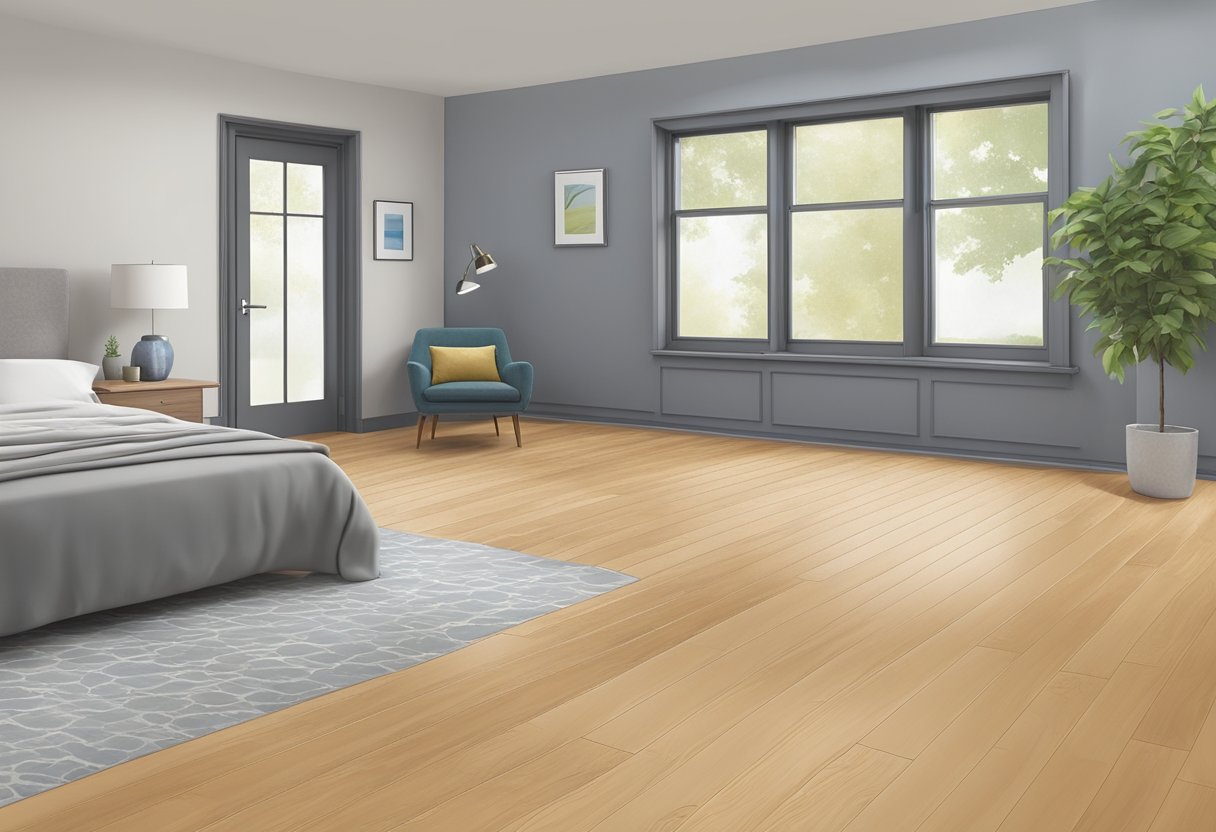
When it comes to laminate flooring, the subfloor is an important factor to consider. The subfloor must be structurally sound, level, and clean before laying the laminate flooring. Here are some things to keep in mind when preparing the subfloor for laminate flooring installation.
Leveling and Smoothness
The subfloor must be level and smooth to ensure the laminate flooring sits properly. Any unevenness in the subfloor can cause the laminate flooring to buckle or warp over time. It is recommended to use a leveling compound to fill in any low spots and create a smooth surface.
Moisture Barrier Needs
Moisture can cause problems with laminate flooring, so it is important to install a moisture barrier if necessary. If the subfloor is concrete or in a basement, a moisture barrier is required to prevent moisture from seeping up into the laminate flooring. A vapor barrier can also be used in areas with high humidity levels.
Overall, taking the time to properly prepare the subfloor will ensure a smooth and long-lasting laminate flooring installation.
Compatibility with Underfloor Heating Systems
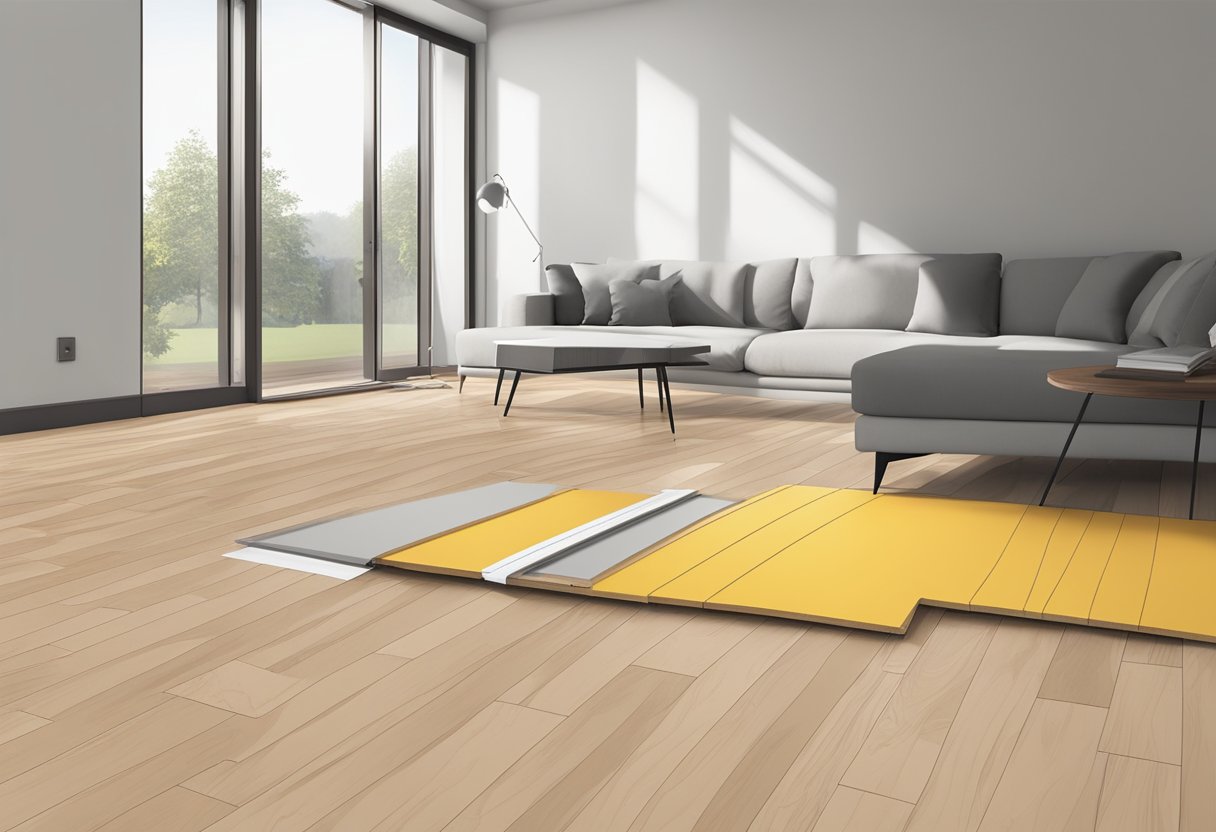
Laminate flooring is compatible with underfloor heating systems, but certain factors need to be considered before installation. The thickness of the laminate flooring is an important factor in determining its compatibility with underfloor heating systems.
Thicker laminate flooring with a lower U-value is more suitable for use with underfloor heating systems. A U-value is a measurement of the heat transfer through a material. The lower the U-value, the better the insulation properties of the material. Laminate flooring with a U-value of 0.15 W/m²K or less is suitable for use with underfloor heating systems.
In addition to thickness, the type of underfloor heating system must also be considered. Laminate flooring is suitable for use with both electric and water-based underfloor heating systems. However, it is important to ensure that the underfloor heating system is installed correctly to avoid any damage to the laminate flooring.
Overall, laminate flooring is a suitable choice for use with underfloor heating systems. However, it is important to consider the thickness of the laminate flooring and the type of underfloor heating system before installation to ensure compatibility and to avoid any potential damage.
Impact on Door Clearances and Transitions
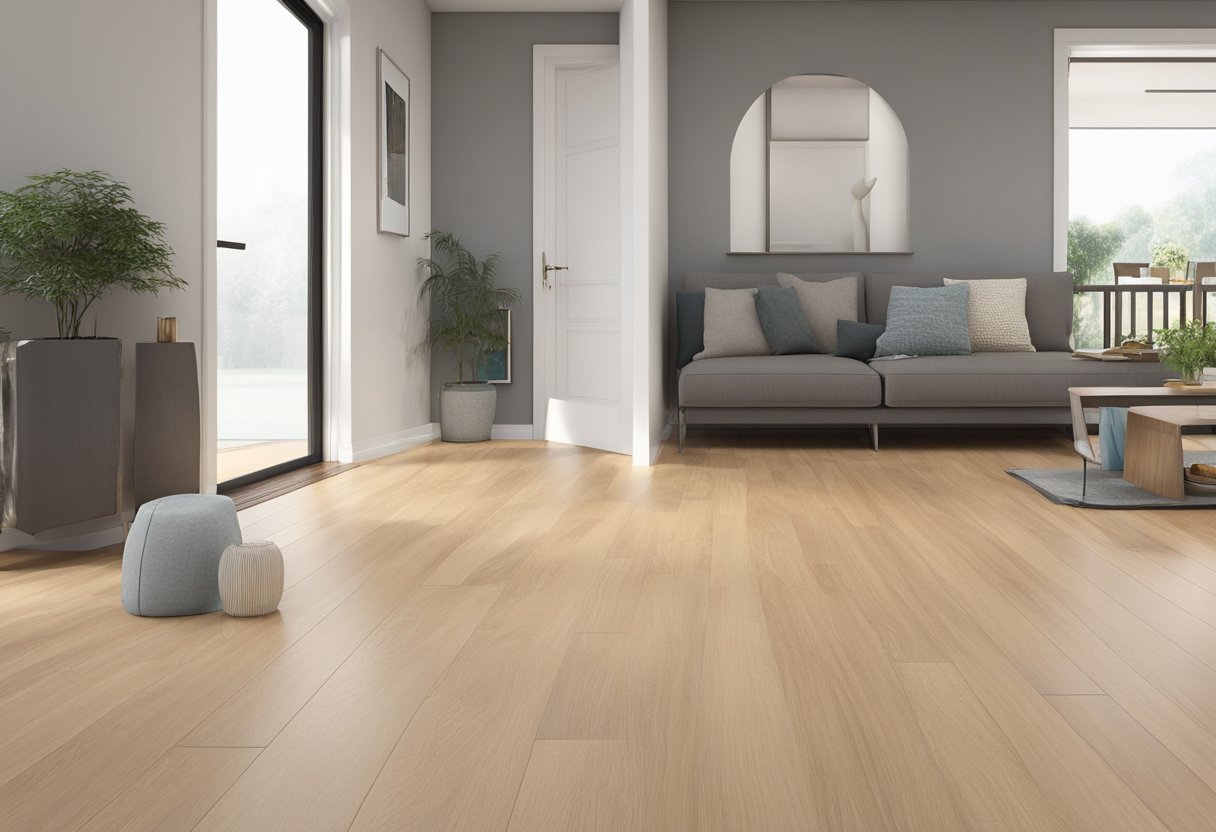
Laminate flooring thickness can impact door clearances and transitions. Thicker laminate flooring can cause issues with door clearances and transitions, especially when installed in areas with existing doors and transitions. Homeowners should consider the thickness of the laminate flooring when planning to install it in areas with existing doors and transitions.
Thicker laminate flooring can cause clearance issues with doors, especially if the door swings inward. The thicker the laminate flooring, the more it will raise the height of the floor, which could cause the door to rub against the floor. Homeowners should measure the distance between the bottom of the door and the floor to ensure that there is enough clearance for the door to swing freely.
Thicker laminate flooring can also cause issues with transitions. Transitions are used to create a smooth transition between different types of flooring, such as from laminate flooring to carpet or tile. If the laminate flooring is thicker than the other flooring, it can create a height difference that can be a tripping hazard. Homeowners should consider the thickness of the laminate flooring when selecting transitions to ensure that they are compatible with the thickness of the flooring.
In summary, laminate flooring thickness can impact door clearances and transitions. Homeowners should consider the thickness of the flooring when planning to install it in areas with existing doors and transitions. Thicker laminate flooring can cause clearance issues with doors and create a height difference that can be a tripping hazard with transitions.
Installation Techniques for Various Thicknesses

Click-Lock Systems
Click-lock systems are the most popular method of laminate flooring installation. They are easy to install and do not require glue, nails, or screws. The thickness of the laminate flooring does not affect the click-lock system installation process. However, thicker laminate flooring is more durable and less prone to wear and tear.
Glue-Down Methods
Glue-down methods are a good option for areas with high foot traffic. Thicker laminate flooring is better suited for glue-down installations as it provides more stability and durability. When using glue-down methods, it is important to use the correct adhesive for the thickness of the laminate flooring. The adhesive should be applied evenly and allowed to dry completely before installation.
Overall, the thickness of laminate flooring affects its durability and stability. Thicker laminate flooring is more durable and less prone to wear and tear. When installing laminate flooring, it is important to choose the correct installation method based on the thickness of the laminate flooring.
Aesthetic Implications of Thickness
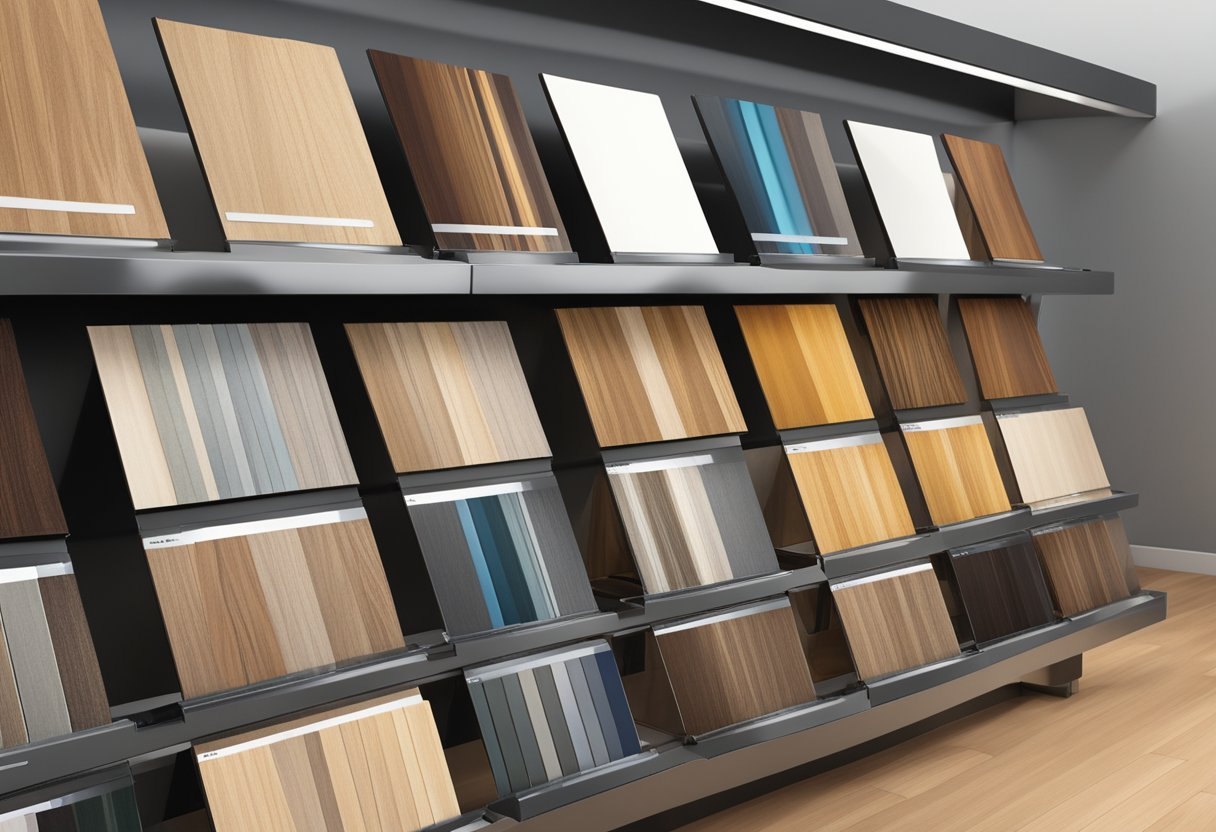
Visual Depth and Realism
Laminate flooring thickness plays a crucial role in determining the visual depth and realism of the flooring. Thicker laminates tend to have more texture and depth, which can make them appear more realistic. This is because thicker laminates can more accurately mimic the look and feel of natural materials like hardwood or stone. Additionally, thicker laminates can better showcase the intricate details and patterns of the design, resulting in a more authentic appearance.
Edge Styles and Effects
Another important aesthetic consideration when it comes to laminate flooring thickness is the edge style and effect. Thicker laminates can create a more pronounced beveled edge, which can add depth and dimension to the flooring. This can be especially effective when used in conjunction with a textured or embossed surface. Additionally, thicker laminates can be more easily cut and shaped to create a variety of edge styles, including square, beveled, and micro-beveled.
In summary, the thickness of laminate flooring has a significant impact on the overall aesthetic of the flooring. Thicker laminates can create a more realistic and authentic appearance, while also providing greater flexibility in terms of edge styles and effects. When considering laminate flooring thickness, it is important to choose a thickness that not only meets your aesthetic preferences but also your practical needs.
Maintenance and Repair Considerations
When it comes to maintaining laminate flooring, prevention is key. Spills and standing water should be wiped up immediately with a damp microfiber cloth and a cleaner specifically formulated for laminate floors. This prevents staining and damage to the flooring. Additionally, it is important to promptly clean up pet urine and other liquids.
To prevent scratches and dents, it is recommended to place felt pads under furniture legs and avoid dragging heavy objects across the floor. Regular sweeping or vacuuming with a soft-bristled brush attachment can help remove dirt and debris that can cause scratches.
If damage does occur, such as a scratch or chip, it is possible to repair laminate flooring. The method of repair will depend on the extent of the damage. For minor scratches, a laminate floor repair kit can be used to fill in the scratch and blend it with the surrounding area. For more significant damage, such as a chip or large scratch, a replacement plank may need to be installed.
Overall, proper maintenance and prompt repairs can help extend the lifespan of laminate flooring and keep it looking great for years to come.
Environmental and Health Considerations
Indoor Air Quality
One important factor to consider when choosing laminate flooring is its impact on indoor air quality. Laminate flooring made with high levels of volatile organic compounds (VOCs) can release harmful chemicals into the air, which can cause respiratory problems and other health issues. To avoid these problems, it is important to choose low-VOC laminate flooring brands like Proximity Mills or non-toxic laminate flooring.
Sustainability Factors
Another important consideration when choosing laminate flooring is its environmental impact. Many laminate flooring brands use materials that are not sustainable and can contribute to deforestation. It is important to choose laminate flooring made from sustainable materials like bamboo or recycled wood fibers. This can help reduce the environmental impact of the flooring and promote sustainability. Additionally, choosing flooring made in a sustainable way can help reduce waste and promote environmental responsibility.
In summary, when choosing laminate flooring, it is important to consider both its impact on indoor air quality and its sustainability factors. By choosing low-VOC and sustainable laminate flooring brands, homeowners can help promote a healthy indoor environment and reduce their environmental impact.
Cost Analysis of Laminate Flooring Thickness
Laminate flooring is a popular choice for homeowners due to its affordability and durability. One of the main factors to consider when purchasing laminate flooring is the thickness. The thickness of laminate flooring ranges from 6mm to 12mm, with thicker flooring being more expensive.
Thicker laminate flooring has a higher density, which makes it more durable and resistant to wear and tear. Thicker laminate flooring also has better sound insulation and feels more solid underfoot.
However, thicker laminate flooring is also more expensive. The cost of laminate flooring varies depending on the thickness, with thicker flooring costing more per square foot. Homeowners should consider their budget when selecting the thickness of their laminate flooring.
In general, 8mm laminate flooring is the most cost-effective option for homeowners. It provides adequate durability and sound insulation while still being affordable. However, homeowners who have a higher budget may want to consider thicker laminate flooring for added durability and a more solid feel underfoot.
Overall, the thickness of laminate flooring is an important factor to consider when making a purchase. Homeowners should balance their budget with their desired level of durability and sound insulation when selecting the thickness of their laminate flooring.
Frequently Asked Questions
What are the benefits of choosing a thicker laminate flooring?
Thicker laminate flooring offers better sound insulation and a more substantial feel underfoot. It can also be more forgiving of minor subfloor imperfections. Additionally, thicker planks can be more resistant to warping and damage from heavy foot traffic.
How does laminate flooring thickness affect durability and longevity?
Thicker laminate flooring can be more durable and longer-lasting than thinner options. The thickness of the planks can help to prevent damage from scratches, dents, and other types of wear and tear. However, it’s important to note that the quality of the laminate flooring and the thickness of the wear layer can also impact durability and longevity.
What is the recommended thickness for laminate flooring in high-traffic areas?
For high-traffic areas, it’s recommended to choose laminate flooring with a thickness of at least 10mm. Thicker planks can better withstand the wear and tear of heavy foot traffic.
How does the choice of underlay impact the overall thickness of laminate flooring?
The underlay can impact the overall thickness of the laminate flooring. Thicker underlay can add extra cushioning and insulation, but it can also increase the overall height of the flooring. It’s important to choose an underlay that is suitable for the thickness of the laminate flooring being installed.
Can a thicker laminate improve insulation and reduce noise?
Thicker laminate flooring can provide better insulation and noise reduction than thinner options. The added thickness can help to block out sound and provide extra insulation against cold temperatures.
What are the considerations for laminate thickness when dealing with uneven subfloors?
When dealing with uneven subfloors, thicker laminate flooring can be more forgiving of minor imperfections. However, it’s important to ensure that the subfloor is level and free from major defects before installing any type of laminate flooring. In some cases, additional subfloor preparation may be necessary to achieve a level surface.